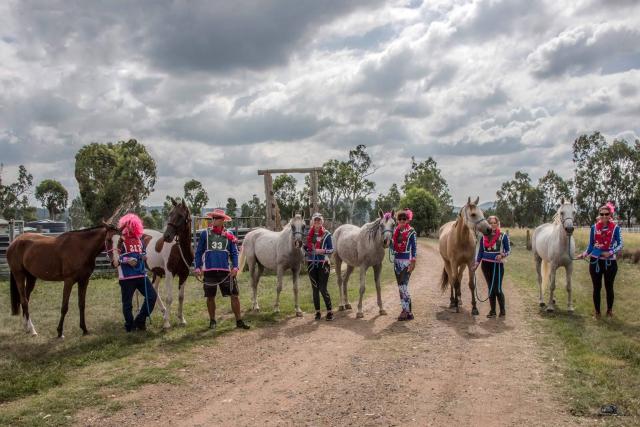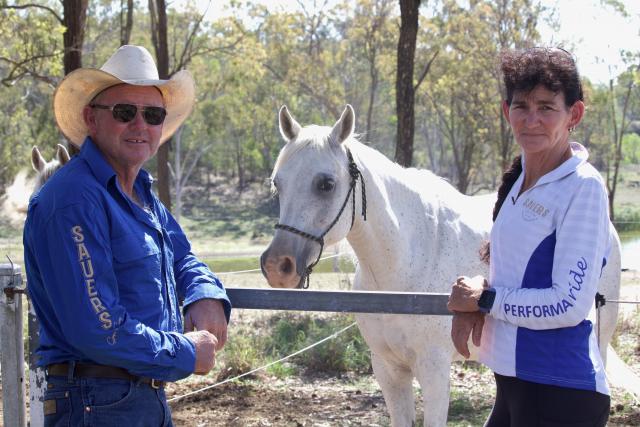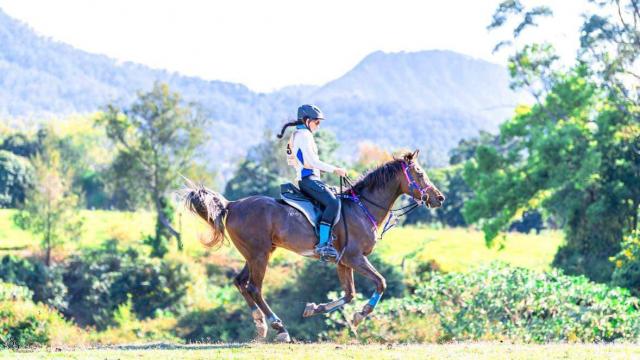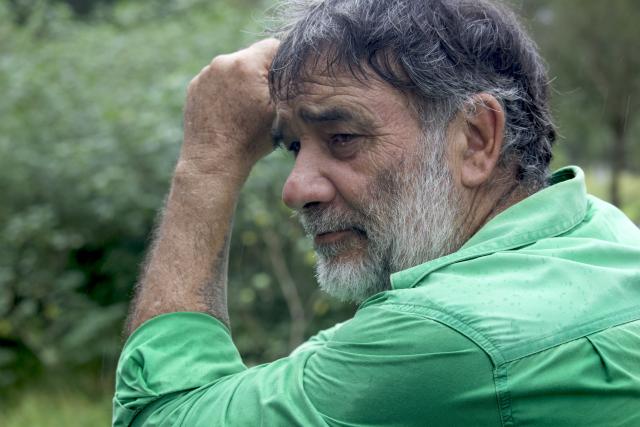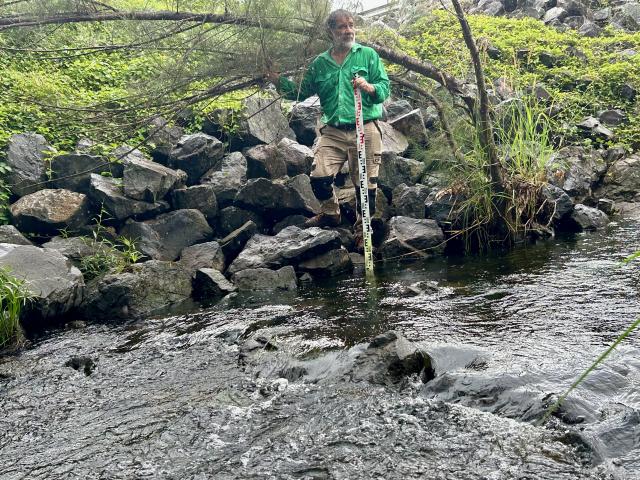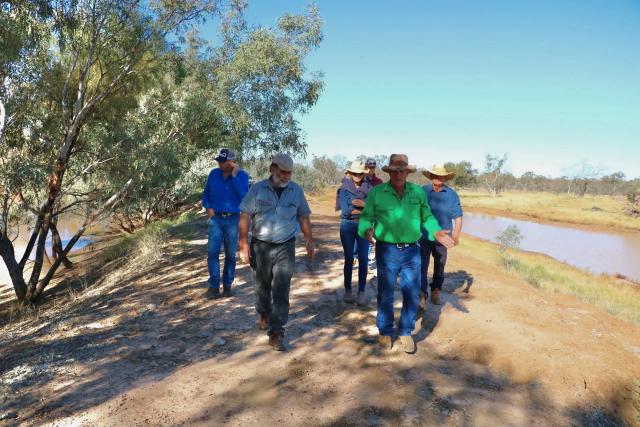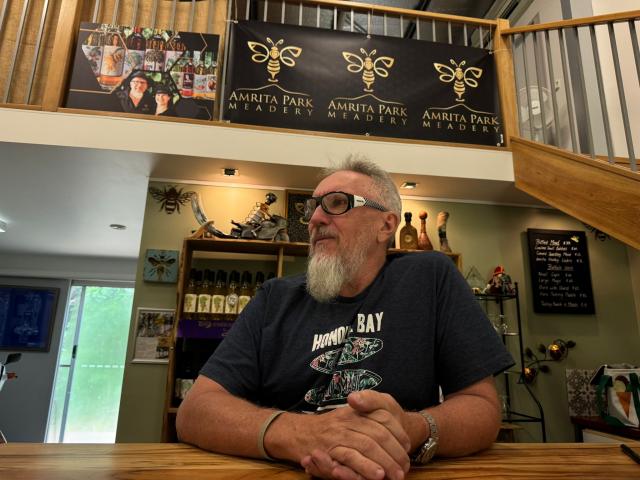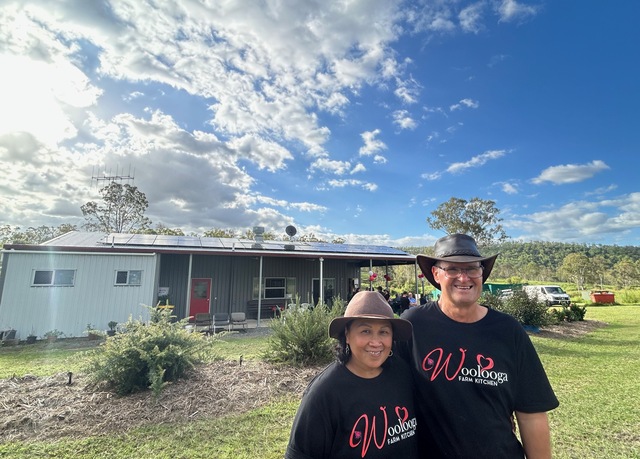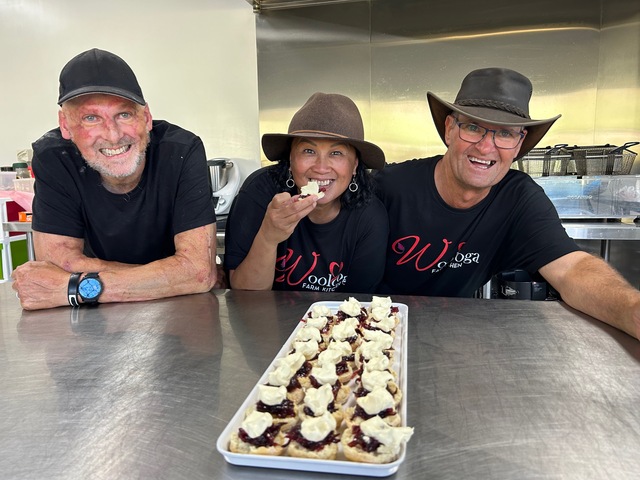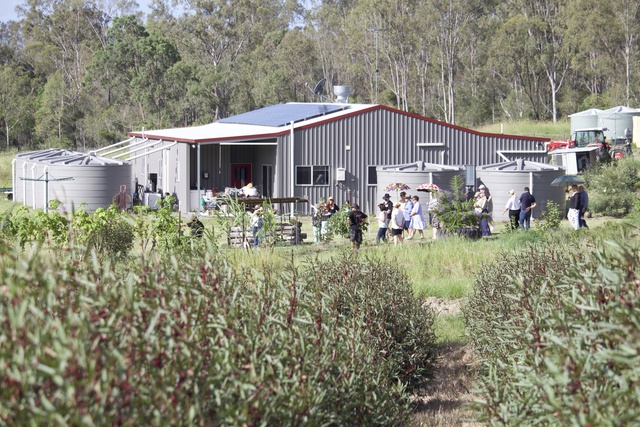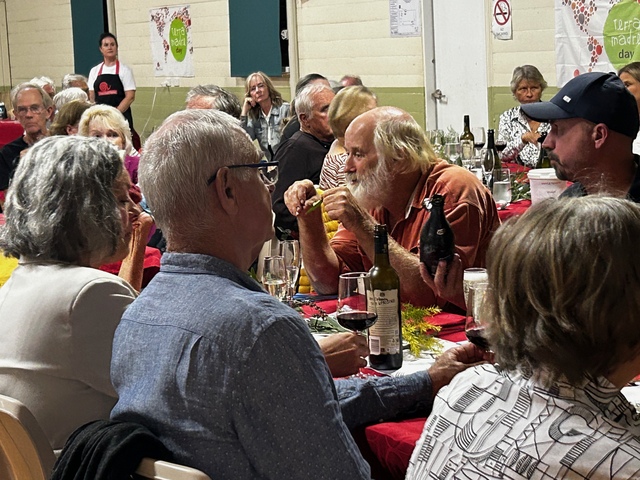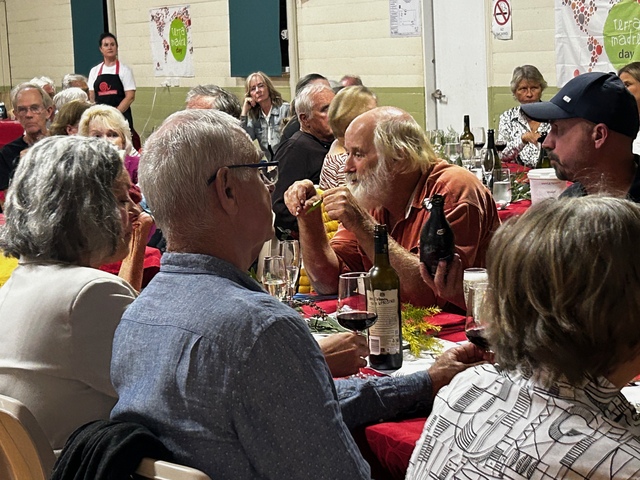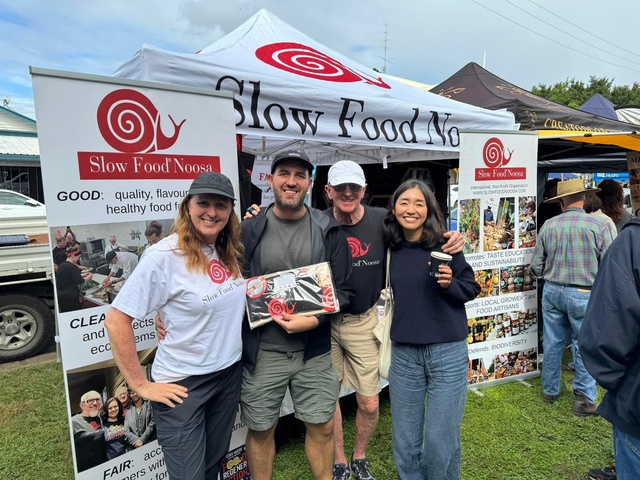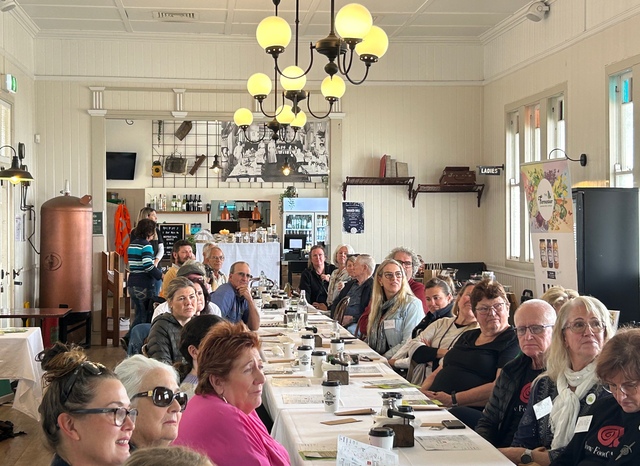PRECEDE
A quick look back at 2024 and you soon realise what an interesting year it has been. ERLE LEVEY has met some amazing people and sat down with them to listen to their stories.
BREAKOUT QUOTE
“We know we have had hard times but we know things will get better because we have such wonderful support, so many people cheering us on. If ever I’m down, I know there is always someone we can call on. I didn’t mean to be crying. I feel like I’m on Australian Idol.”
On The Land has provided the opportunity to meet some wonderful people and allowed me to tell their stories – the challenges they face and the rewards of living this farming life.
A quick look back at 2024 – indeed, the past four years – and you soon realise what an interesting time it has been, with some tremendous changes and so much to look forward to.
In that time we have seen drought and flooding rain, the strain the Covid pandemic years put on production and supply. Yet those events remind us of the importance primary producers play and the value of strong communities.
As expected, we have spoken about dairy farming and grazing, forestry and crops.
Yet there has been articles about passionfruit, dragonfruit, mushrooms, bee-keeping and the nurturing of queen bees for national distribution.
We have spoken about oranges, persimmons, ginger … and horses.
Then there are the people behind those on the land who are providing information on the improved capture and use of water, the renourishing of depleted soils, the benefits of cell grazing methods.
These are the stories of people who have been third and fourth generations on the land, and those who have been latecomers – and with them come fresh ideas, new ways of looking at things.
Kandanga Farm Store, for example, with its regenerative farming philosophy and Agvention field days.
Forage Farm with its sequestration of water to better use the natural resources instead of seeing them go to waste.
The Slow Food movement puts forward its philosophies of good, healthy and fair food by encouraging local farmers, retailers and restauranteurs to utilise fresh, local produce.
At the same time to support sustainability and protection of the environment.
Overall, it’s encouragement for all of the community to appreciate what is around us.
Take the time to celebrate food and use it as a coming together for family gatherings and discussions.
GourMay, the month-long festival celebrating food and produce in the Mary Valley and region, is just such an inspirational event.
TAKING IT IN THEIR STRIDE
Shelley Chapman loves riding in the Australian bush – almost as much as she loves her horses. Just as well, because in 2023 Shelley rode a distance further than from Brisbane to Cape York – and almost as far as from Gympie to the Western Australian border.
The 2792km covered in endurance riding is a Queensland record and that says a lot about the rider and the way she cares for her horses.
Shelley and husband Michael have an 150-acre property at Kilkivan, and that has provided a turning point for them.
Originally from Herberton in Far North Queensland, they have developed Shanelli Park Endurance where they now run about 70 horses.
From their property, on a high-point of the Great Dividing Range, it is as if we’re on top of the world. The national trail virtually goes past their front gate – a 5330km trek from Cooktown in Queensland to Healesville in Victoria.
Shelley and Michael’s move to Kilkivan in 2008 was a life-changing experience in regard to endurance riding.
Their efforts of clearing the property of a lantana and scrub jungle are paying off.
While Shelley has been extremely successful at endurance riding, Michael has also achieved much – mostly in the preparation of the horses.
This comes from his background of working on large cattle stations in Western Queensland.
Michael concentrates on 40km events to get the horses ready for other riders.
Twenty Shanelli Park horses campaigned in the 12 months to February under Queensland Endurance Riders Association (QERA), with 14 riders in the team.
Shanelli Park combinations competed in 68 open rides with only two non-completions and six withdrawals (a 94.56 percent completion rate), also receiving 14 best conditioned horse awards for events.
This was along with 43 entries in the smaller distances and a 98.68 percent completion rate.
The first Tom Quilty 160km event for Shelley was at Kilkivan in 2013. In that she finished fifth in the middleweight division.
Endurance is all about completion, so riders who achieve a successful Tom Quilty finish are awarded a commemorative belt buckle.
After winning Queensland State Champion in 2022, Shelley gained third lightweight in the 2023 championships at Inglewood, riding Harry Who te from the Toft stables.
This year she completed her fourth Tom Quilty Gold Cup – at Wirrina Cove in South Australia, and while riding In the lightweight division Shelley and Harry Who te finished sixth.
UP THE CREEK WITH A PUDDLE
You know you’re in for a fascinating conversation when someone asks to see your creek bed.
I met Peter McAdam at the Agvention field day at Kandanga last year.
Show me the lowest part of the creek on your property, he told me.
By doing that, he could help determine the health of the land – the quality of the soil, the amount of water absorption, the level of run-off.
That was impressive.
Peter McAdam is passionate about ensuring healthy waterways and how to utilise and protect our precious resource.
Based in the Mary Valley, he is the Creek Doctor; he judges the health of the waterway, what’s needed to improve it, ways in which to make the whole cycle of slow it, sink it, store it, work for the betterment of the property.
As well as being a qualified environmental consultant, Peter is especially passionate about investing in catchment management – creeks, erosion, creating sustainable wetlands, creek crossings and riparian corridors along riverbanks.
This stems back to his childhood. Born in the UK, the family moved to Queensland when Peter was aged five.
His father held a position as a medical specialist in Mt Isa.
The lure of the bush and the stability of having an indigenous family to teach him about the environment gave the young Peter a sense of wonderment.
Days would be spent down on the banks of the Leichhardt River, among the rocks and sand of a landscape supply business.
It was there that Peter realised that the continued dredging whittled the river bed down to bedrock. Then after more flood-like events the soil was washed away, and with it the trees.
“When I finished school, I could have studied teaching but was an apprentice fitter machinist with Mt Isa Mines.
“I had a head for physics and basic maths so when I came to Brisbane a friend said I should apply to Griffith University and get in as an adult entrant.’’
Peter thought he would do one year of environmental studies and transfer to engineering. Yet he liked the course and met a lot of people through it that he’s still close to.
After graduating, Peter’s first role was as co-ordinator for North Queensland Conservation in Townsville. He then took on facilitation roles including being employed by the Australian Fisheries Management Authority, Mackay Regional Council for their 2020 Vision on social development, and Queensland University of Technology’s student union.
It was at Braidwood, between Canberra and Bateman’s Bay, where he worked for a soil conservation service doing river care and catchment management, that all the planets lined up.
There were lots of resources available for training and meeting with landholders to better understand what they could do to improve the conditions for water on their properties.
That brings me back to Peter’s initial question about showing him a photo of the lowest part of a creek and the property.
“For one thing, it gets you there – it makes you think about the situation.
“The lowest part is where most of the water drains. If that point is vegetated and reasonably wet, then everything upstream can have a much better chance of remaining wet.
“If it’s scoured out and washed away, then the chance is upstream will be washed away as well.’’
“I like visiting people’s places, talking through issues, explaining how it works.
Since moving to Queensland, Peter has worked with such bodies as Mary River Catchment Coordinating Committee (MRCCC), Southern Queensland Landscapes, Burnett Mary Regional Group and the Southern Rim region.
Workshops in Southern Queensland have been mostly about landscape rehydration.
It’s an issue that’s complex and yet simple at the same time. It revolves around the way our landscape has changed through the years – there are not so many humps and hollows any more. Everywhere is downhill of somewhere else.
That is like pulling a plug on a tub and the water drains out.
“The rehydration of landscapes is really about allowing more infiltration from the water that’s standing on the landscape, and the water that’s falling onto the landscape. Soaking it up.
“In order to have run-off, it’s either got to be very steep, be very full or be impervious.
“If it’s relatively flat and not impervious, the ground can soak up the water at a certain rate. If it rains very, very heavily – then it can’t soak away.
“If it can sit there for a while it can start to soak in.
“The whole rehydration thing is about not having the water run away so quickly – if it does you end up with a lot more water in the creek and a lot more destruction in the flow-line from having that amount of water.
“The other thing is, the water runs past quite fast. The flood peak might be up in two hours and then down again.
“That doesn’t do much good for anybody … not for long-term habitat. It flushes out sand and gravel from the bed, scours it so much that it is washes out vegetation.
“I can understand people saying they want some fresh (water) in the creek. But the big flows going through don’t stand for long – they don’t soak in and don’t allow vegetation to get established.’’
GOOD FOOD, GOOD HEALTH
Healthy soil, pure water and clean air are necessary for good food production, leading to overall health and a sustainable environment.
As Slow Food Noosa president for 2024, Andy Coates said the committee’s aims were to support farmers, restaurants and producers, and at the same time focus on the environment and the need for good, clean and fair food for everyone.
This over-arching message from Slow Food International, with members from more than 150 countries around the world, must also be passed onto the younger generations.
Slow Food Noosa is doing this with its Snail Kids program that runs in schools within the Noosa region and Gympie.
This initiative, managed by Slow Food member and Sunshine Beach primary school teacher Di Seels, has attracted significant recognition from fellow teachers as well as parents of students.
Fairness in farm gate prices for farmers was also a priority for 2024.
Andy and partner Nicola Cleaver established Amrita Park Meadery at Pomona seven years ago and have been active Slow Food members.
This has included Andy being a delegate to the 2022 Slow Food International bi-annual world conference, Terra Madre Salone Del Gusto in Turin, Italy.
Four delegates were sent to Italy this year to promote the region and learn skills as well as experience the camaraderie of the world-wide movement.
Highlights for 2024 included partnering with GourMay for the celebration of food in the Mary Valley, with a Film And Food night at Kandanga Hall. The Festival Day at Imbil saw about 12 Slow Food producers represented.
Two more Film and Food nights were held at Pomona’s Majestic Theatre throughout the year including being part of Noosa Alive festival of music, theatre and performance.
The annual Snail of Approval presentation dinner at Park & Cove in Peppers Noosa Resort in February was a sold-out event that included a trade display.
Producers who adopt the Slow Food principles are recognised through a process of evaluation.
The Woombye Cheese tasting night at the cellar door was a sell-out as well, with a full range of cheese and the history as well as ways to enjoy them being hosted by Beth O’Leary.
The mid-year breakfast at Mary Valley Rattler’s Rusty Rails Cafe was a way of getting to know farmers and producers over a hearty meal, and encouraging the use of local produce on menus.
Slow Food again supported the Agvention Field Days at Kandanga, with a strong list of regenerative farming speakers and farm walks.
The Pomona Christmas Night Market provided another opportunity for Slow Food to show support of a community working together to promote local producers and craftspeople, tradespeople and businesss.
As part of the new committee for 2025, in-coming president Anne Godfrey has held a long-term passion for food and emphasises the value of lifelong learning.
Having a career in health, Anne wants to encourage good food as a way to help lower the burden of disease in the community.
“Unknowingly, that’s been part of what I’ve been about,’’ she said.
This year Anne wants to consolidate what was achieved in 2024 and support groups with similar philosophies of good, healthy and fair food for all that is produced in a sustainable manner.
Heavy emphasis is placed on sustainability and the environment by supporting Landcare initiatives, and that of land-holders.
In 2025 it will be a matter of continuing to support and expand youth programs, including Slow Food Noosa’s Snail Kids that brings farmers and producers to the classroom.
The pillars of Slow Food Noosa are education and awareness of their philosophy through holding events and helping build stronger communities.
Anne Godfrey will be supported on the executive committee by joint vice presidents Melissa Innes and Tania Wiesmayr-Freeman, secretary Alex Thompson-Welch and treasurer Kim Maddison.
THE COOK AND THE FARMER
Energetic, enthusiastic, inspirational … there is no mistaking the innovation, the determination and the resilience of Woolooga cook Cecilia (CC) Diaz-Petersen.
CC’s 13-year journey from selling home-made jams, sauces and chutneys at market stalls to having her own label and commercial kitchen is representative of the struggles many farmers and producers face.
The launch of the new Woolooga Farm Kitchen label on Petersen’s Farm at Woolooga in March was filled with emotion and gratitude.
CC described the journey of this young woman who had a dream that she would grow up to be a cook, and that she would marry a farmer.
“I don’t know how that happened,’’ CC told friends, family and supporters.
However, if she thought that paying $7500 for a secondhand High Ace van to get her to markets around Maryborough and Gympie, was a big financial step, nothing could compare to the decision to go from roadside stall to full-blown country kitchen to make and retail her produce.
That must have been massive, especially when you bear in mind that the project went ahead during the Covid-19 pandemic.
Planning approval for the facility had been completed before the 2019-20 outbreak of the pandemic, that cast so much doubt in peoples’ minds about the future.
Yet CC and husband Greg Petersen carried on with the project in a display of persistence beating resistance to follow the dream.
Their foresight saw the tradespeople put the foundations in place before the worst of Covid hit – the full labour force went down with the virus during the construction phase.
The pandemic saw spiralling costs in building materials, labour shortages, disruptions to transport chains and a total unknown of what the food industry would hold.
Those fears were soon overcome as the impact of fresh food shortages hit and local produce was very much in demand.
The brand launch, which supersedes her original CC’s Kitchen label, was catered for by long-time friend and encourager, chef Matt Golinski.
In between tears of gratitude and of laughter from shared experiences, CC told guests the idea was to make the kitchen much more – to make it a hub for learning, an inspiration of young people and gathering place for community groups.
On school visits, students learn about the facility, sustainability, solar and composting.
There are cooking demonstrations during the tours and then the students share in the food.
Throughout the 13 years CC has been cooking and Greg following his lifelong dream of being a farmer, they have had to contend with drought, floods, bushfires and the pandemic.
CC and Greg’s resilience showed through at the opening of the country kitchen.
As much as CC has been an inspiration to many small farmers and producers whenever they have doubts, with tears streaming down her face she paid tribute to the people of Woolooga, Gympie and Maryborough who have supported them through thick and thin.
“We know we have had hard times but we know things will get better because we have such wonderful support,’’CC said, “so many people cheering us on.
“If ever I’m down, I know there is always someone we can call on. I didn’t mean to be crying. I feel likeI’m on Australian Idol.”
The Big Rosella Field Day at Woolooga Farm Kitchen is turning 10 in 2025.
It’s on Saturday and Sunday, May 3-4, from 9am to 3pm. Included will be cooking demonstrations, farm tours and music.There will even be a Q&A session on how to grow a rosella.

